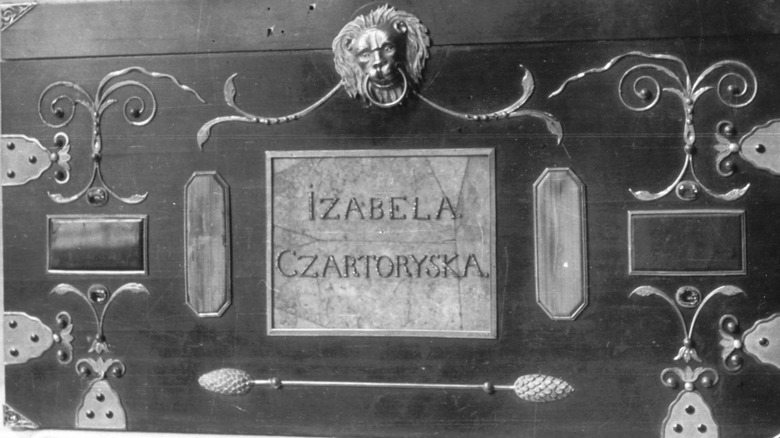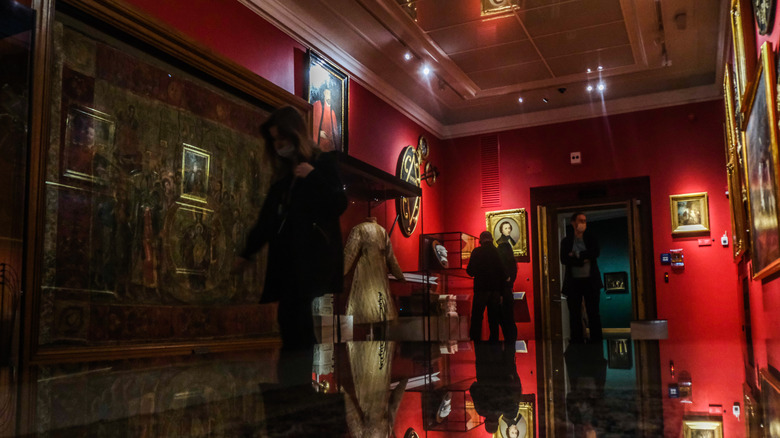The Real Reason We Can't Find The Stolen Treasures Of The Royal Casket
The Royal Casket was a wooden chest that held valuable items, which belonged to the Polish royal family. It was created in 1800 by Izabela Dorota Czartoryska — a Polish princess who had a great interest in collecting fine pieces of art. Her collection was so vast that she founded the Czartoryski Museum — Poland's oldest museum that was built in 1801 — to display memorabilia, artwork, and antiquities that she amassed throughout the years, per Krawkow Info.
Czartoryska's interest in collecting art started in the 1780s when she went on a trip to Switzerland, Scotland, and England. She acquired a few pieces, and as the years went by, she was able to immensely grow her collection (via Culture). The Royal Casket is said to contain 73 relics from Polish royalty. Among them are Queen Marie Casimire's gold watch, King Sigismund the Old's pectoral cross, Queen Marie Leszczynska's silver rosary, and the gold snuff-box of King Stanislaw August Poniatowski, as noted in the book "Guide of the World's Most Valuable Missing Treasures" by Linda Mayers. After its creation, Czartoryska had the Royal Casket hidden in the museum in Pulawy.
What happened to the Royal Casket?
In 1830, the November Uprising — also called the Polish-Russian War — was in full swing. The Polish rebelled against the Russian forces and attempted to overthrow them (via Britannica). To protect the valuable items, Izabela Czartoryska had the Royal Casket transported to Krakow during the uprising where it stayed there until World War II, per Baba Mail. The Royal Casket was concealed behind a brick wall of a palace outbuilding.
The Nazis occupied Poland in 1939, and it was then that the Royal Casket and its contents were lost. According to What Culture, a German employee of the Czartoryskis revealed the location of the Royal Casket. The Nazis found it and divided its contents among themselves. The Germans also seized several collections from the Czartoryski Museum. In 1950, the Czartoryski Museum was reconstructed and renovated. Some of the items that were lost were eventually recovered, but the Royal Casket and the valuable items it contained have never been seen to this day.
Today, the Czartoryski Museum — which is now part of the National Museum in Krakow — houses a vast collection of artwork including Rembrandt van Rijn's "Landscape with the Good Samaritan" and Leonardo da Vinci's "Lady with an Ermine" (via MNK).

